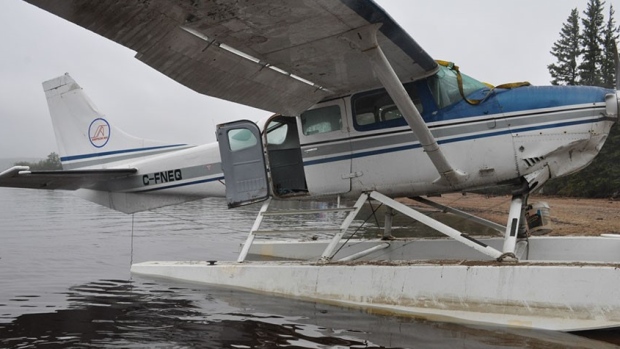
The Transportation Safety Board has issued a safety advisory on a long established design issue with Cessna 206 aircraft that can make emergency escapes difficult. The TSB issued the advisory as part of its investigation into the fatal crash of a 206G on floats on Little Doctor Lake, near Fort Simpson in the Northwest Territories last Aug. 16. The aircraft crashed on landing but the crash was survivable and the pilot and one passenger in the right front seat escaped through the window on the pilot’s door. The three rear passengers had released their seatbelts but drowned inside the cabin. The pilot dove in to try to help them out but the rear doors were locked from the inside. Their use as an emergency exit is placarded above the doors and requires several manipulations of the latches on both doors but is complicated when the aircraft is in landing configuration because the right flap blocks the forward door.
The advisory said the latches were not damaged in the crash and worked properly and it’s not known what action, if any, the passengers took to save themselves. The advisory did not specifically link the design issue to the fatalities in this case but asked Transport Canada to have another look at it. “The risks resulting from delayed egress from the aircraft remain high, and more defences are needed to mitigate this hazard,” the advisory said. “TC may wish to reassess the suitability of the rear double cargo door as an emergency exit, as described in certification requirements for all Cessna 206 series aircraft.” TC, Cessna and the FAA tried to work out a solution to the flap issue when Cessna resumed production of the 206 in 1998 but gave up. As a result, TC reduced the number of people allowed in the new model 206H to five from the six that are still allowed in earlier models.
